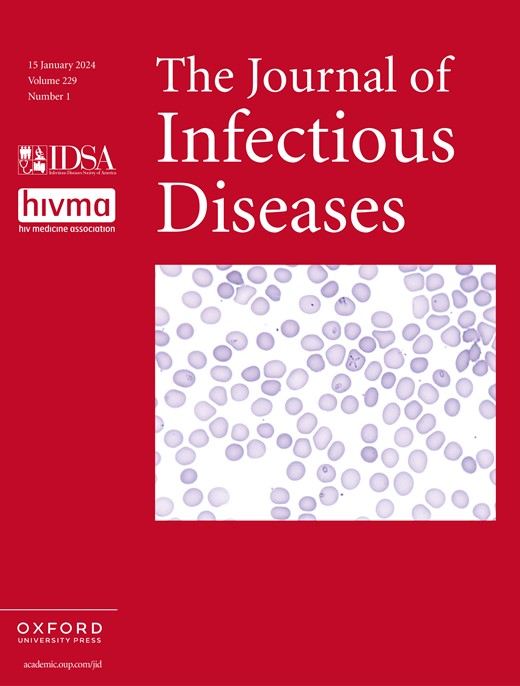"拉沙病毒诱发小鼠前庭功能障碍的病理学启示:内耳前庭装置的组织病理学分析"。
IF 5
2区 医学
Q2 IMMUNOLOGY
引用次数: 0
摘要
由拉沙病毒(LASV)感染引起的拉沙热(LF)通常会导致人类出现轻微症状,但一些幸存者会出现听觉前庭问题。在此,我们介绍了对拉沙热模型小鼠前庭组织病理学的深入研究。我们观察到1)前庭神经节和感觉上皮下基质内出血;2)毛细胞和支持细胞保存完好;3)前庭神经节细胞和感觉上皮下基质中存在 LASV 抗原;4)前庭神经节和感觉上皮下基质中存在 CD3 阳性 T 淋巴细胞浸润。LASV和/或其免疫反应可能是前庭功能障碍的发病机制之一。本文章由计算机程序翻译,如有差异,请以英文原文为准。
Pathological Insights into Lassa Virus-Induced Vestibular Dysfunction in Mice: Histopathological Analysis of the Inner Ear Vestibular Apparatus.
Lassa fever (LF), caused by Lassa virus (LASV) infection, typically leads to mild symptoms in humans, but some survivors experience audiovestibular problems. Here we present vestibular histopathological insights in our LF model mice. We observed (1) hemorrhage within the vestibular ganglion and stroma beneath the sensory epithelium, (2) preserved hair cells and supporting cells, (3) LASV antigen presence in the vestibular ganglion cells and the stroma beneath the sensory epithelium, and (4) CD3-positive T-lymphocyte infiltration in the vestibular ganglion and the stroma underlying the sensory epithelium. LASV and/or its immune response likely contributes to the pathogenesis of vestibular dysfunction.
求助全文
通过发布文献求助,成功后即可免费获取论文全文。
去求助
来源期刊

Journal of Infectious Diseases
医学-传染病学
CiteScore
13.50
自引率
3.10%
发文量
449
审稿时长
2-4 weeks
期刊介绍:
Published continuously since 1904, The Journal of Infectious Diseases (JID) is the premier global journal for original research on infectious diseases. The editors welcome Major Articles and Brief Reports describing research results on microbiology, immunology, epidemiology, and related disciplines, on the pathogenesis, diagnosis, and treatment of infectious diseases; on the microbes that cause them; and on disorders of host immune responses. JID is an official publication of the Infectious Diseases Society of America.
 求助内容:
求助内容: 应助结果提醒方式:
应助结果提醒方式:


